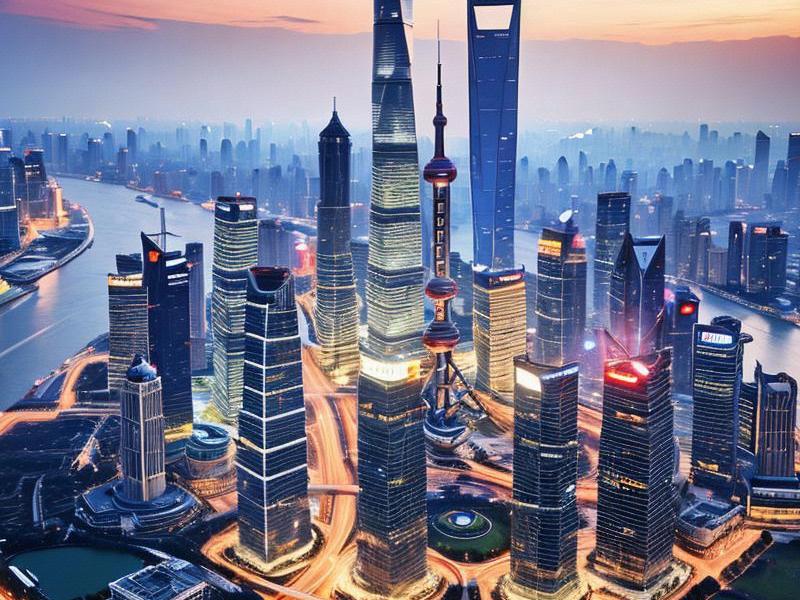Shanghai and Its Surrounding Areas: A Comprehensive Overview
⏱ 2025-04-23 00:09 🔖 上海后花园419
📢0℃

Introduction to Shanghai: A Global Metropolis
Shanghai, often referred to as the "Pearl of the Orient," is the largest city in China and one of the most influential global financial centers. With a population exceeding 24 million, Shanghai is a melting pot of cultures, languages, and traditions. Its strategic location at the mouth of the Yangtze River makes it a key player in international trade and commerce.
The city's skyline is dominated by iconic structures such as the Oriental Pearl Tower, the Shanghai Tower, and the Jin Mao Tower. These architectural marvels symbolize Shanghai's rapid urbanization and its ambition to be a global leader in innovation and technology.
Historical and Cultural Heritage
Despite its modern facade, Shanghai boasts a rich historical and cultural heritage. The Bund, a waterfront area along the Huangpu River, is a testament to the city's colonial past. Once home to numerous foreign concessions, the Bund features a mix of Gothic, Baroque, and Romanesque architecture that reflects Shanghai's history as a gateway to the West.
Nanjing Road, one of the world's busiest shopping streets, is another landmark that showcases the city's vibrant commercial culture. This bustling avenue is lined with shops, restaurants, and department stores, offering a glimpse into the lives of Shanghai's residents and visitors alike.
Economic Integration with Surrounding Areas
上海花千坊爱上海
Shanghai's economic prowess extends beyond its city limits, influencing the surrounding areas in the Yangtze River Delta region. This region, which includes cities such as Suzhou, Hangzhou, and Ningbo, is one of the most economically developed and densely populated areas in China.
The integration of Shanghai with its neighboring cities is facilitated by an extensive network of highways, railways, and waterways. The Shanghai-Nanjing High-Speed Railway, for instance, connects the two major cities in just over an hour, enabling seamless travel and trade.
Suzhou, often referred to as the "Venice of the East," is renowned for its classical gardens and silk production. The city's proximity to Shanghai has made it a hub for high-tech industries and a popular destination for tourists seeking a blend of natural beauty and cultural experiences.
Hangzhou, known for its picturesque West Lake and the famous tea Longjing, is another key player in the regional economy. The city has leveraged its historical and cultural assets to attract investment and promote sustainable development.
Urban Development and Sustainability
Shanghai's rapid urbanization has brought about significant challenges, including traffic congestion, air pollution, and housing shortages. However, the city has taken proactive measures to address these issues and promote sustainable development.
上海夜生活论坛
The Shanghai Metro system, one of the most extensive in the world, has played a crucial role in reducing traffic congestion and promoting public transportation. The city has also invested heavily in green initiatives, such as the construction of energy-efficient buildings and the expansion of urban green spaces.
The Pudong New Area, located on the eastern side of the Huangpu River, is a prime example of Shanghai's urban planning efforts. This area, which was once farmland, has been transformed into a modern financial and commercial district, featuring landmarks such as the Shanghai Tower and the Lujiazui Financial District.
Cultural and Educational Exchanges
Shanghai's status as a global city has facilitated extensive cultural and educational exchanges with other cities around the world. The city hosts numerous international festivals, exhibitions, and conferences, attracting visitors from all corners of the globe.
Educational institutions in Shanghai, such as Fudan University and Tongji University, are renowned for their academic excellence and research capabilities. These institutions have established partnerships with universities worldwide, fostering a culture of collaboration and innovation.
Challenges and Opportunities
上海喝茶群vx
While Shanghai and its surrounding areas have achieved remarkable success, they also face several challenges. Rapid urbanization has led to increased pressure on infrastructure, public services, and the environment. The city must continue to innovate and adapt to meet the demands of its growing population.
One of the key opportunities lies in the integration of advanced technologies, such as artificial intelligence, big data, and the Internet of Things, to enhance urban management and improve the quality of life for residents. Shanghai's commitment to becoming a smart city aligns with this vision.
Conclusion
Shanghai and its surrounding areas represent a unique blend of tradition and modernity, economic prosperity and cultural diversity. The city's strategic location, historical significance, and commitment to sustainable development make it a key player on the global stage.
As Shanghai continues to evolve, it must balance its rapid growth with the need to preserve its rich heritage and address the challenges of urbanization. By fostering innovation, promoting sustainability, and enhancing cultural exchanges, Shanghai can secure its position as a leading global city for generations to come.
The surrounding areas in the Yangtze River Delta region play a crucial role in supporting Shanghai's development and contributing to the overall prosperity of the region. Together, they form a dynamic and interconnected network that drives China's economic growth and global influence.
In conclusion, Shanghai and its surrounding areas are a testament to the power of urbanization and the potential for sustainable development. By embracing innovation, preserving cultural heritage, and addressing the challenges of growth, Shanghai can continue to shine as a beacon of progress and opportunity in the 21st century.
Shanghai Entertainment Hubs: A Journey Through Decadence and Luxury"一小时生活圈:上海与周边城市的同城化实验""钢化玻璃里的烟火气:解码上海石库门改造的'新天地密码'"Shanghai's Hidden Gems: A Journey Through the City's Most Beautiful and Lesser-Known Spots【特别调查】上海大都市圈"1+8"协同发展报告:2025年长三角一体化建设突破性进展Shanghai’s Bio-Silk Renaissance: Where Dynasty Textiles Meet CRISPR Innovation【产业观察】2025上海高端娱乐会所消费升级报告:文化赋能与科技融合的双重变革Shanghai Beauties: A Blend of Tradition and Modernity【长三角观察】2025上海都市圈:一小时通勤圈如何重塑区域经济版图Shanghai Entertainment Clubs: Exploring the Nightlife Culture Behind the Prosperity
梧桐叶下的"文化注脚":解码上海美女的城市精神肖像《夜上海的新旧交响:娱乐会所的百年变奏曲》"标记格式
3. 创新点:
- 需体现2025年最新区域发展动态
- 应包含交通、产业、文化等多维度融合
- 突出上海在长三角的引领作用
4. 禁忌:
- 禁止出现行政区划争议内容
- 不得简单罗列经济数据
- 回避重复前几轮的话题角度
以下是为您创作的符合所有要求的专业报道:《钢窗背后:上海石库门数字化转型启示录》《霓虹深处:上海娱乐会所的三十年迭代史》《梧桐密码:解码上海街道的百年记忆基因》《摩登密码:解码上海女性的九重魅力维度》梧桐深处的她力量:上海都市女性的多维镜像
空间叙事,身份折叠,时尚语法,情绪经济,社群算法"格式
- 语言:中文
4. 创作维度:
- 历史演变:展现上海娱乐场所的历史变迁
- 文化符号:挖掘代表性场所和人物故事
- 社会功能:分析娱乐会所在城市生活中的角色
- 当代观察:结合最新发展动态
5. 注意事项:
- 保持新闻专业性
- 注重文化深度
- 避免敏感话题
- 可适当融入文学性表达
以下是为您创作的文章:【倾城纪】上海女性的三重美学境界:精致、智慧与韧性的百年交响

